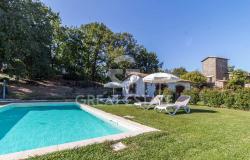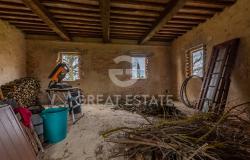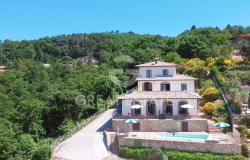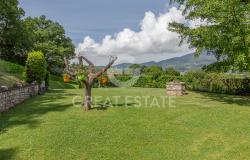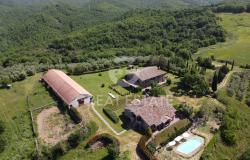Five-thousand feet up in the Sibillini Mountains the air was like wine, and the picnic - wild boar salami, wafer-thin slices of prosciutto, tomato salad dressed with chopped basil and olive oil, pecorino cheese, crusty bread and sweet melons - was food fit for the gods. But it was the setting that made our alfresco meal so memorable: an alpine meadow so thickly strewn with orchids, saxifrage and wild peonies that there was hardly room for a blade of grass.
We were walking in the Apennines, a three-hour drive north-east of Rome, in Umbria to be more precise, in the Parco Nationale dei Sibillini. Created less than 10 years ago, this is Italy’s newest national park and what a gem it is, offering some of the most glorious walks in Europe. Yet few of the country’s British visitors have heard of it.
In Roman times, these lonely mountains were the haunt of the Sibyl, the legendary enchantress who lured travellers to their doom. Today they have become a natural refuge for wolves, golden eagles, wildcats and porcupines. In springtime, the park is an oasis of birdsong, and wherever I walked I was serenaded by cuckoos and skylarks, and the ‘wet-my-lips’ whistle of quails in the meadows. But the park’s greatest glory is its abundance of wild flowers, and early June is probably the best time to see them.
Floral kingdom I had begun my walk at the mountain hamlet of Pintura di Bolognola, following a stony track that climbed steadily up the sides of a hanging valley. At first there were beechwoods, but it was above the treeline, at about 5,000 feet, that we entered the park’s rich floral kingdom. Here, on every side, grew carpets of mauve and yellow mountain pansies, patches of midnight-blue gentians and sambucina orchids.
Adding to the enjoyment of this unspoilt region are the small, friendly, family-run hotels where you can stay each night, tucking into suppers cooked by the owner, using fresh local produce. The food everywhere is delicious and makes generous use of tartuffi - the black truffles for which this corner of Umbria is famous.
Next day we were back in the mountains, zigzagging up to a ridge called the Passo Cattivo - the Bad Pass - which sulked above us in the clouds. Now and again, a patch of blue sky would appear, only to be obscured as fresh veils of mist floated up from the valleys below. But when at last we reached the ridge, the sun broke through, lighting up stretches of ploughed-up turf where wild boar had been rooting for tubers in the night. From here the path swooped down into the Valle Stretta - the Narrow Valley - towards the bright eye of a mountain tarn that glittered 1,000 feet below.
On both sides of the path the flowers poured in rivers of gold, spiked by the deep purple of orchids, beyond counting. Had we come earlier in the year, I might have seen the masses of wild crocuses and wild tulips which had by now finished flowering. But lower down there were still drifts of narcissi nodding in the breeze, and all around and above us rose the dizzy crags and 6,500-feet summits of the Sibillini heartland.
Piani great and small
By now I was completely hooked on the Sibillini region. In landscape terms it knocks spots off Tuscany. True, it may lack the set-piece glories of Siena and San Gimignano; but compared to Chiantishire, its countryside remains virtually unexplored. As always in mountain country there were some long ascents, but the walking was never too arduous and the reward for the morning’s uphill slog was the discovery of another world, among Elysian fields of mountain buttercups, thyme and saxifrage, grape hyacinths, white rock roses and mauve swags of meadow clary. In places, the flowers grew so closely together that it was impossible to avoid stepping on them. The highlight of the week was the Piano Grande, a spectacular natural amphitheatre stamped like a giant hoofprint into the surrounding hills. Nearly five miles across at its widest point, it reminded me so much of Tanzania’s Ngorongoro Crater that I half expected to see a black rhino wandering across its grassy floor.
From our vantage point on the Piano Grande’s 900-foot rim I could also see its little sister, the Piano Piccolo, and in the distance, beyond the romantic hill town of Castelluccio, the Piano Perduto - the Lost Plain. All three depressions are the ancient beds of Ice Age lakes, covered now by natural pastureland. The sounds of the Piano Grande are grassland sounds - skylarks, quails and meadow cricket - and, in early June, the rainbow colours of its wild flowers make this heavenly hollow one of the most beautiful places on Earth. Walking down into the Piano Piccolo, we passed nobody but the solitary figures of mushroom-pickers hunting among the flowers. In the middle of the crater was a lily pond alive with frogs. Around it in broad sweeps, narcissi lay as white as snow. On the hillside beyond, cuckoos were calling from the beechwoods; and nearby we found the skeleton of a sheep, picked clean by wind and rain and crows. Possibly, it had been killed by the wolves who still roam in these wild Umbrian mountains.
Prized black diamonds
Norcia (population 5,000), where I spent my last two nights in the region, is one of the great little towns of Italy. Older than Rome by 600 years, it is still encircled by its medieval walls, and locals reckon it is the truffle capital of the universe. Truffles - the prized black diamonds of Umbria - are not easy to find. They grow under the oaks of the lower valleys and you need a well-trained hound with a radar nose to unearth them. November is the month for truffle-hunting, but these mysterious fungi are on the menu all-year round, adding their ineluctable flavour to pasta, omelettes and crostini.
Our last day’s walk began after a short drive down the Campiano Valley from Norcia to the Benedictine monastery at San Eutizio. We passed beneath the shade of truffle oaks and on through a string of half-empty villages, each with its church and 14th-century frescoes, until at last we came to a river with a packhorse bridge, trout pools and nightingale thickets, for yet another perfect picnic. It was an idyllic spot, surrounded by cherry orchards and sunlit meadows. But my heart was still in the high country, bewitched by the magic of the mountain flowers as surely as if entrapped by the Sibyl herself.


